Introduction
Konjac, scientifically known as Amorphophallus konjac, is a unique plant native to Asia, particularly China and Japan. This tuberous root has been used for centuries in traditional medicine and cuisine due to its various health benefits and unique textural properties. Fresh konjac is particularly valued for its versatility in the kitchen, where it can be transformed into a myriad of dishes ranging from savory to sweet. However, preparing fresh konjac can be tricky due to its high content of oxalic acid and other compounds that can irritate the skin and throat if not handled properly. This comprehensive guide aims to demystify the process of preparing fresh konjac, ensuring that you can enjoy its unique flavor and texture safely and deliciously.
Understanding Fresh Konjac
Before diving into the preparation, it’s crucial to understand what fresh konjac entails. Fresh konjac refers to the tuberous root harvested directly from the plant, typically found in temperate climates. It has a firm, starchy texture and a mild, slightly earthy flavor when cooked. The skin of the konjac root is tough and inedible, while the flesh inside is white and starchy.
Fresh konjac is different from konjac flour or konjac jelly, which are processed forms of the plant. Konjac flour is made by grinding dried konjac roots into a fine powder, often used as a gluten-free thickener or binder in recipes. Konjac jelly, on the other hand, is a translucent, jelly-like substance made from konjac flour and water, commonly used in Asian desserts and as a low-calorie food option.
Health Benefits of Fresh Konjac
Fresh konjac is prized for its numerous health benefits, which include:
- Dietary Fiber: High in soluble fiber, konjac helps improve digestion and supports a healthy gut microbiome.
- Low Calorie: With very few calories, it’s an excellent choice for weight management.
- Gluten-Free: Suitable for those following a gluten-free diet.
- Blood Sugar Regulation: The soluble fiber in konjac helps stabilize blood sugar levels.
- Cholesterol Reduction: Studies suggest it can help lower LDL (bad) cholesterol levels.
Safety Considerations
Handling fresh konjac requires caution due to its high oxalic acid content and other irritants. Direct contact with the skin or ingestion of raw konjac can cause discomfort or irritation. Here are some safety tips:

- Wear Gloves: Always wear gloves when handling fresh konjac to protect your skin.
- Avoid Inhalation: Be mindful of dust particles when peeling or grating the root, as inhaling them can irritate the throat and lungs.
- Cook Thoroughly: Never consume raw konjac. Cooking breaks down the irritants and makes it safe to eat.
Selecting Fresh Konjac
When choosing fresh konjac, look for roots that are firm, smooth, and free of cracks or soft spots. The skin should be a dull, earthy brown, and the flesh inside should be white and starchy. Avoid konjac that feels lightweight or has an off odor, as these may be signs of spoilage.
Tools and Equipment
To prepare fresh konjac, you’ll need the following tools and equipment:
- Sharp Knife: For peeling and slicing the konjac.
- Vegetable Peeler: Alternatively, for removing the tough skin.
- Gloves: To protect your skin from irritation.
- Grater or Food Processor: For grating the konjac into smaller pieces, if needed.
- Large Pot: For boiling the konjac to remove excess starch and irritants.
- Colander: For draining the cooked konjac.
- Cutting Board: For preparing and slicing the konjac.
- Measuring Cups and Spoons: For accurate ingredient measurements.
Step-by-Step Preparation
Now, let’s dive into the step-by-step process of preparing fresh konjac:
-
Preparation and Safety Measures
- Begin by wearing gloves to protect your skin.
- Place a cutting board on a stable surface and gather all your tools and ingredients.
-
Peeling the Konjac
- Using a sharp knife or vegetable peeler, carefully remove the tough outer skin of the konjac. Discard the skin.
- Be mindful of the dust and avoid inhaling it.
-
Cleaning the Konjac
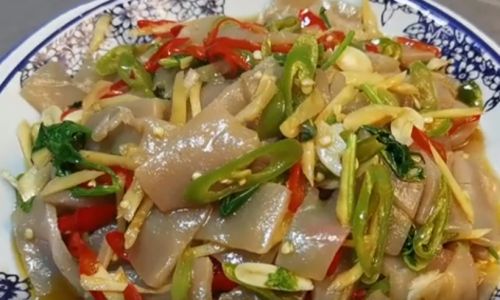
- Once peeled, rinse the konjac under cold running water to remove any dirt or debris.
- Pat it dry with a clean kitchen towel.
-
Slicing or Grating
- Depending on your recipe, you may need to slice the konjac into thin pieces or grate it into smaller particles.
- Use a sharp knife for slicing, ensuring even thickness for uniform cooking.
- For grating, use a hand grater or food processor fitted with a grating attachment.
-
Removing Excess Starch
- Fresh konjac contains a high amount of starch, which can make dishes gluey if not removed.
- Place the sliced or grated konjac in a colander and rinse it under cold water, gently rubbing the pieces to release excess starch.
- Let the konjac drain well, pressing down lightly with a clean kitchen towel to remove as much moisture as possible.
-
Boiling the Konjac
- Fill a large pot with water and bring it to a rolling boil.
- Add a pinch of salt to the water (optional, but it enhances flavor and helps firm up the konjac).
- Carefully add the prepared konjac to the boiling water.
- Blanch the konjac for about 3-5 minutes, depending on the thickness and desired texture.
- Test for doneness by tasting a small piece. It should be tender but not mushy.
-
Draining and Cooling
- Once cooked, immediately remove the konjac from the boiling water using a slotted spoon or colander.
- Let it drain well, shaking off any excess water.
- Place the konjac on a clean kitchen towel or paper towels to cool slightly.
-
Preparing for Use
- At this point, the konjac is ready to be used in various recipes.
- You can use it immediately in dishes like stir-fries, soups, or salads.
- Alternatively, you can store the cooked konjac in an airtight container in the refrigerator for up to 3 days.
Cooking with Fresh Konjac
Now that your fresh konjac is prepared, here are some delicious ways to use it:
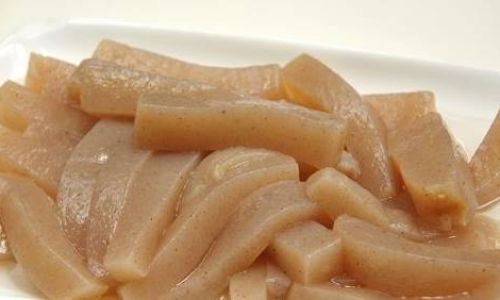
-
Konjac Noodles:
- Grate the cooked konjac into thin strands to create a gluten-free noodle alternative.
- Toss with your favorite sauce, vegetables, and protein for a nutritious meal.
-
Konjac Stir-Fry:
Slice the cooked konjac into thin strips and stir-fry with vegetables and a light sauce for a quick and easy dinner.
-
Konjac Soup:
Add cooked konjac slices to miso soup or a clear broth for a satisfying and healthy meal.
-
Konjac Salad:
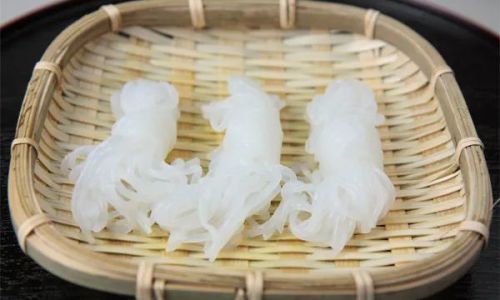
Combine grated or sliced konjac with mixed greens, vegetables, and a light vinaigrette for a refreshing salad.
-
Konjac Dessert:
While less common, you can experiment with using cooked konjac in desserts like jelly or pudding, taking advantage of its unique texture.
Conclusion
Preparing fresh konjac may seem like a daunting task, but with the right techniques and safety measures, it can be a rewarding experience. The versatility of fresh konjac allows it to be incorporated into a wide range of dishes, making it a valuable addition to any gluten-free or health-conscious diet. By following the steps outlined in this guide, you can enjoy the unique flavor and texture of fresh konjac while ensuring your safety and satisfaction. Happy cooking!

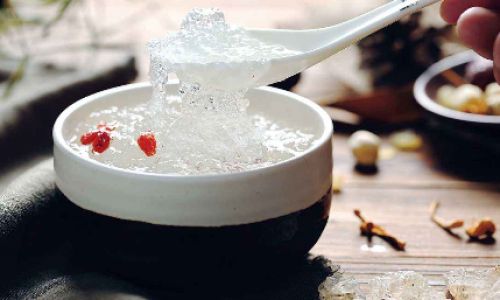
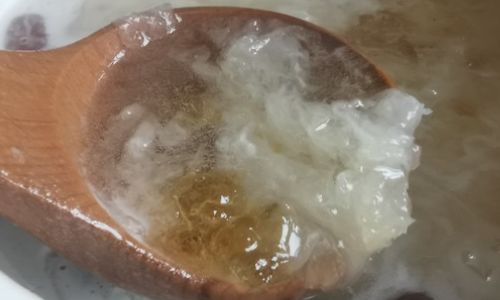
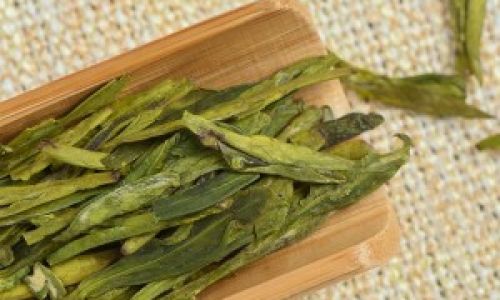
0 comments